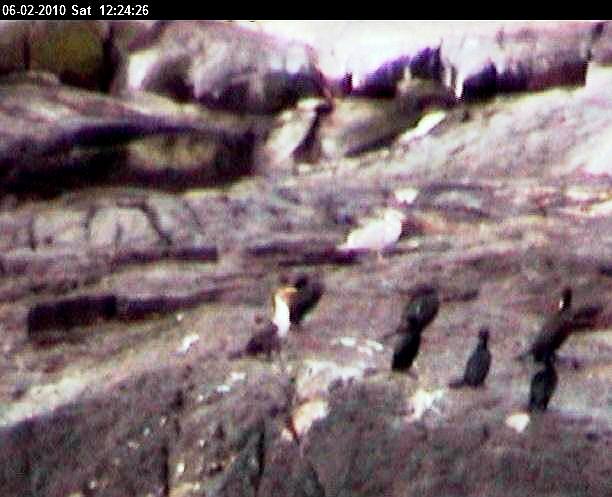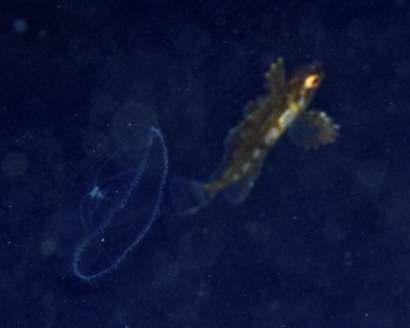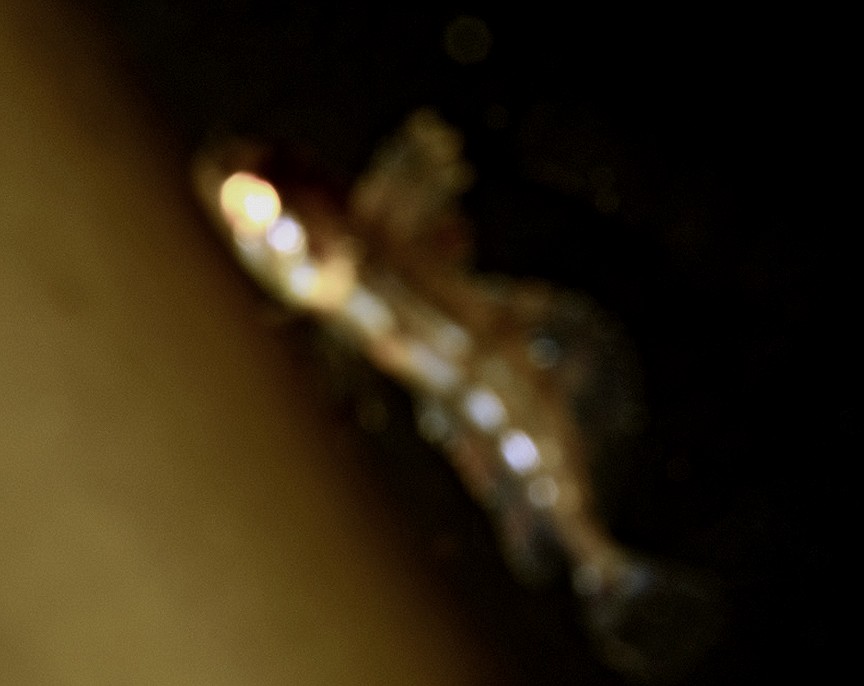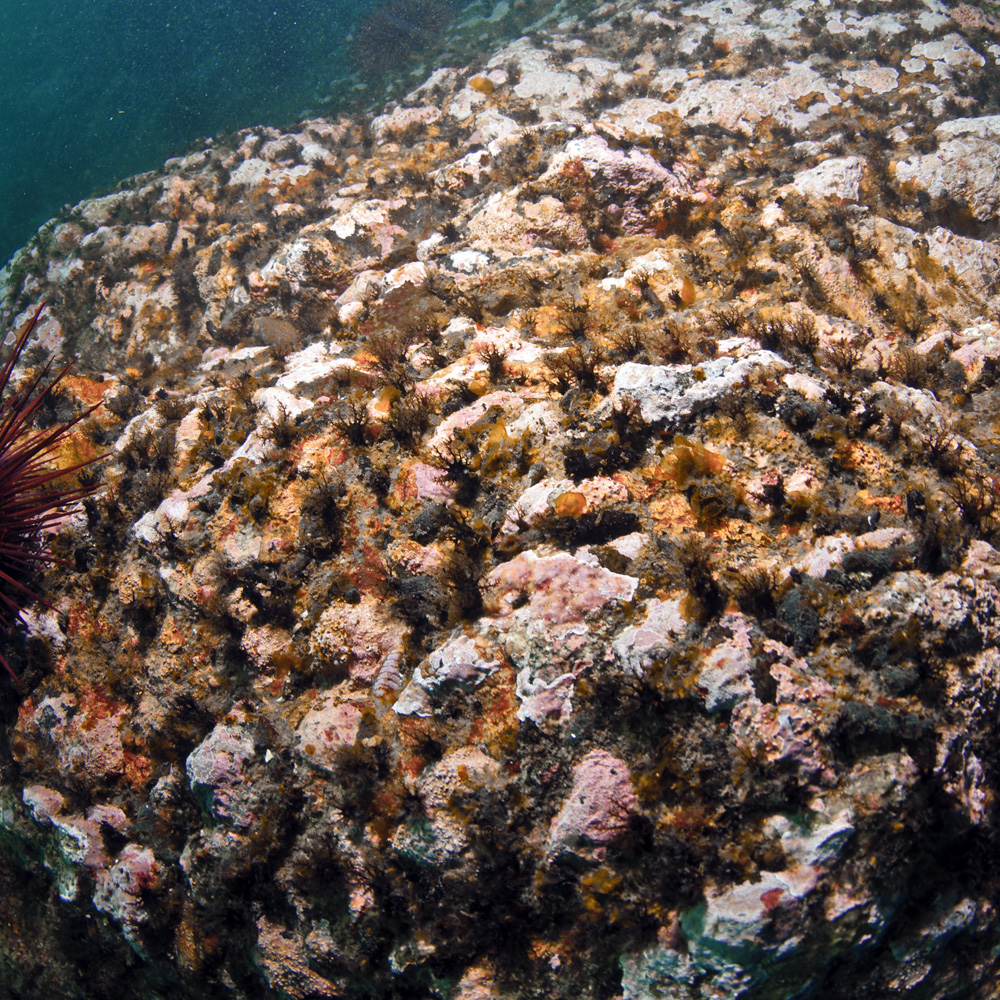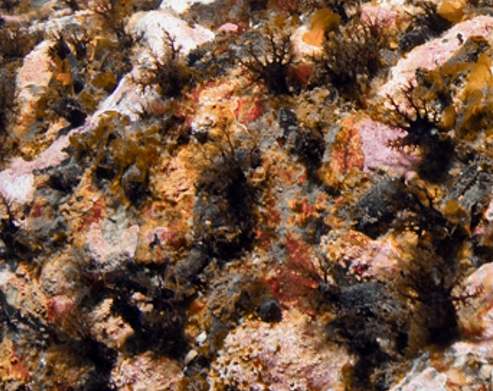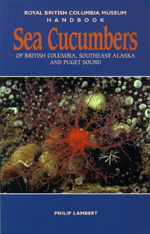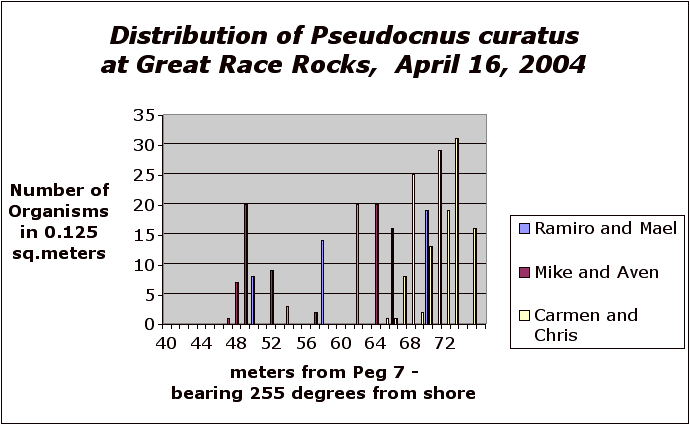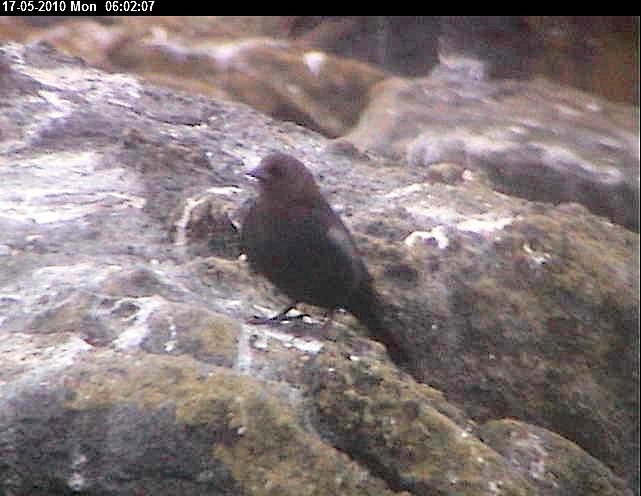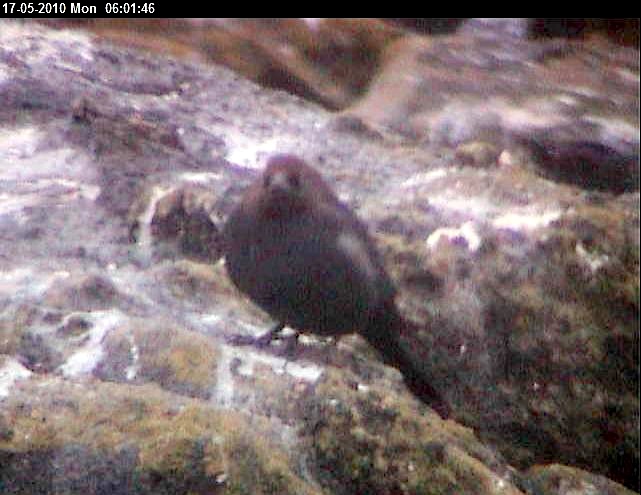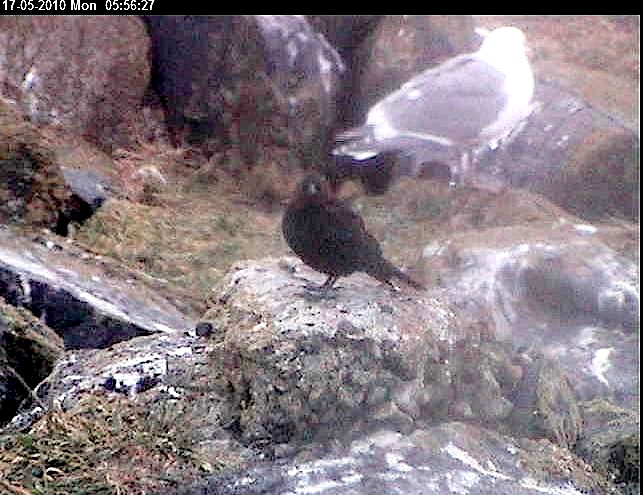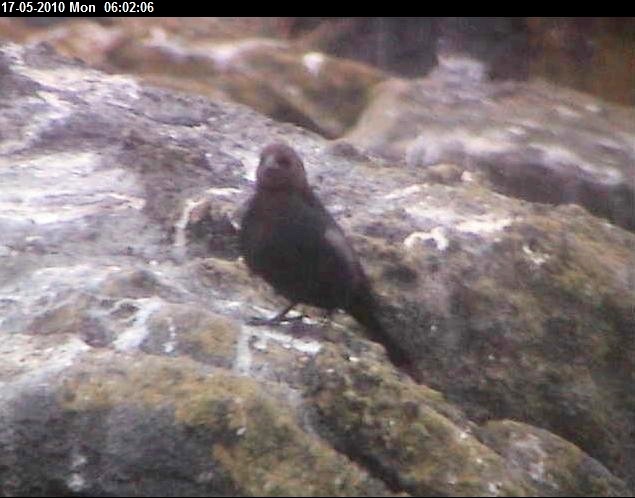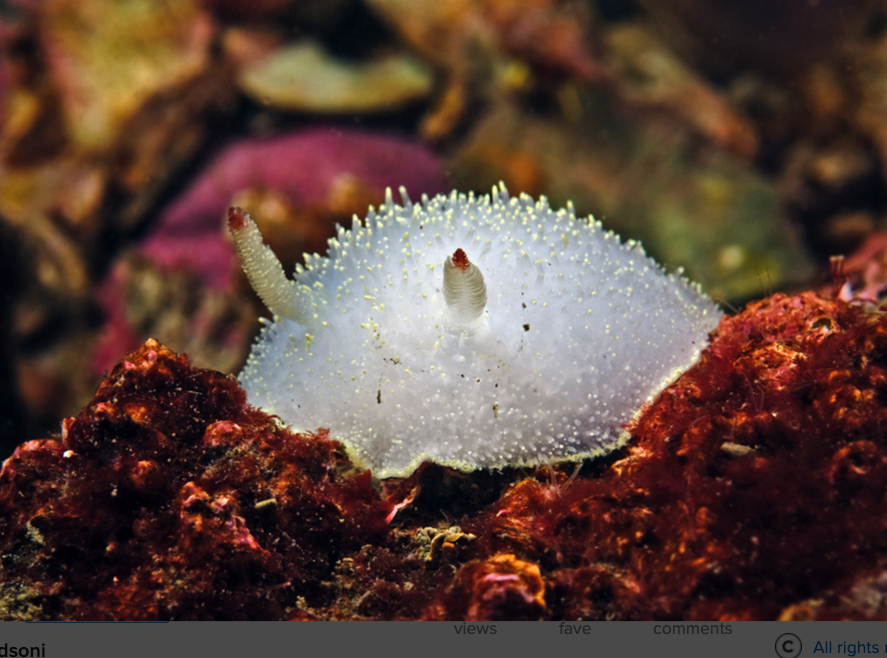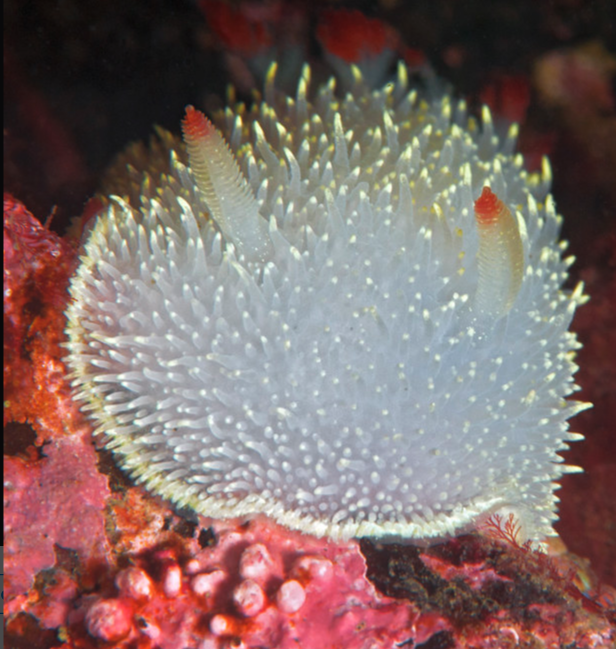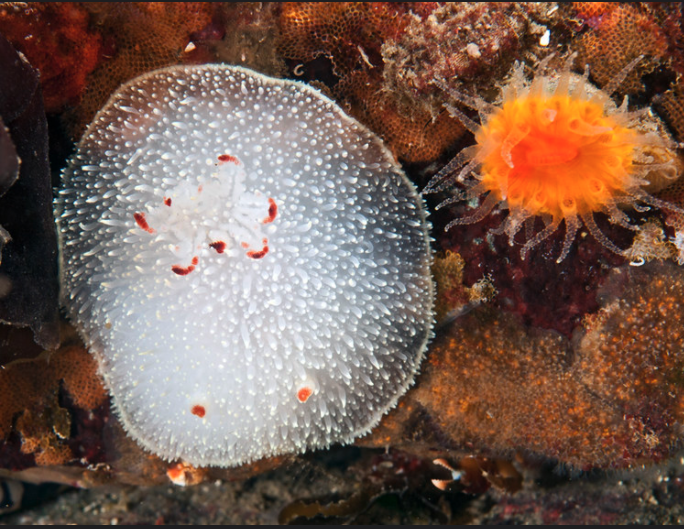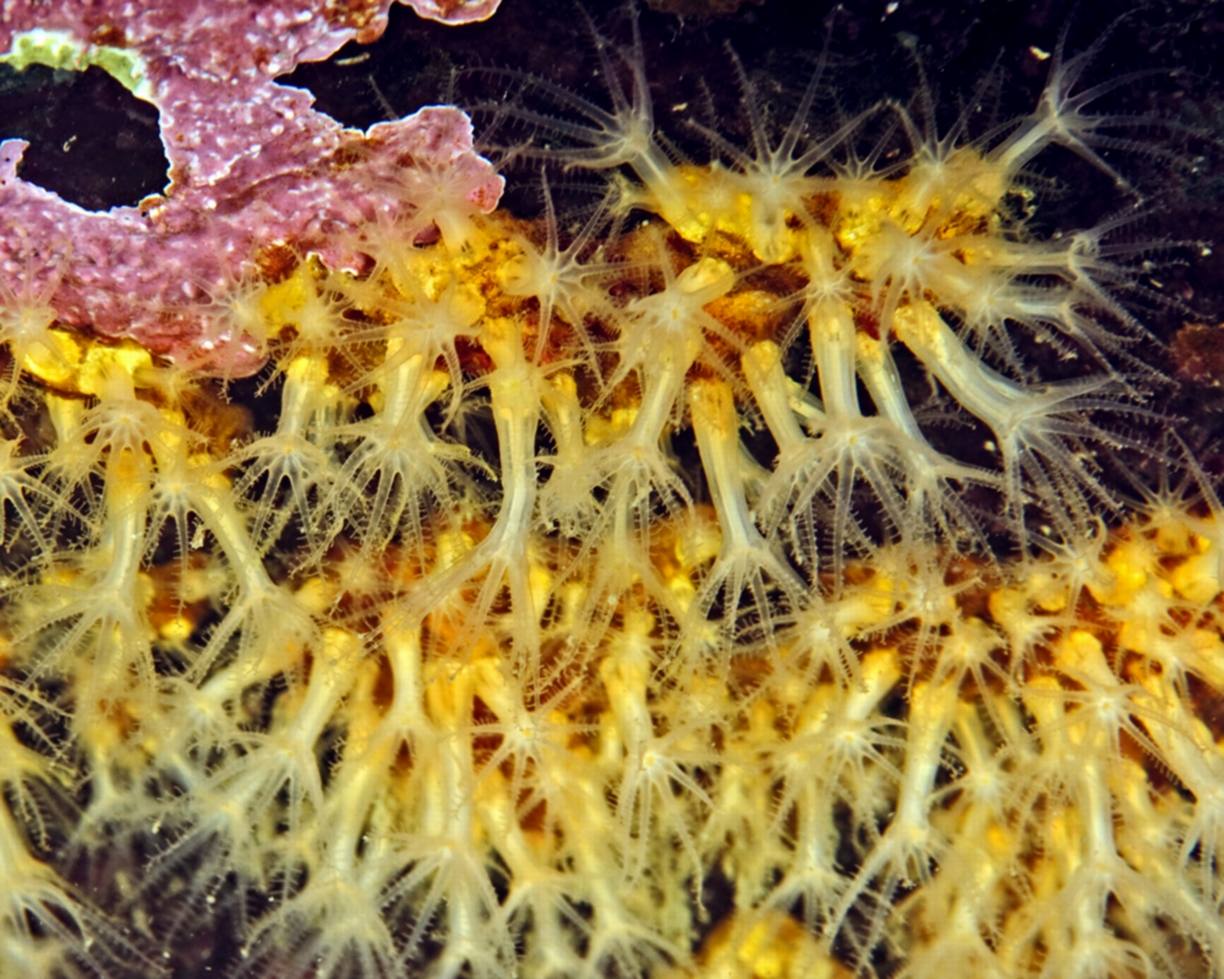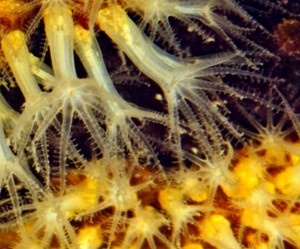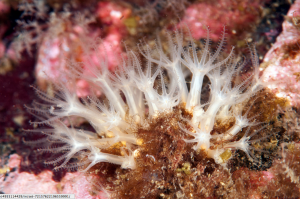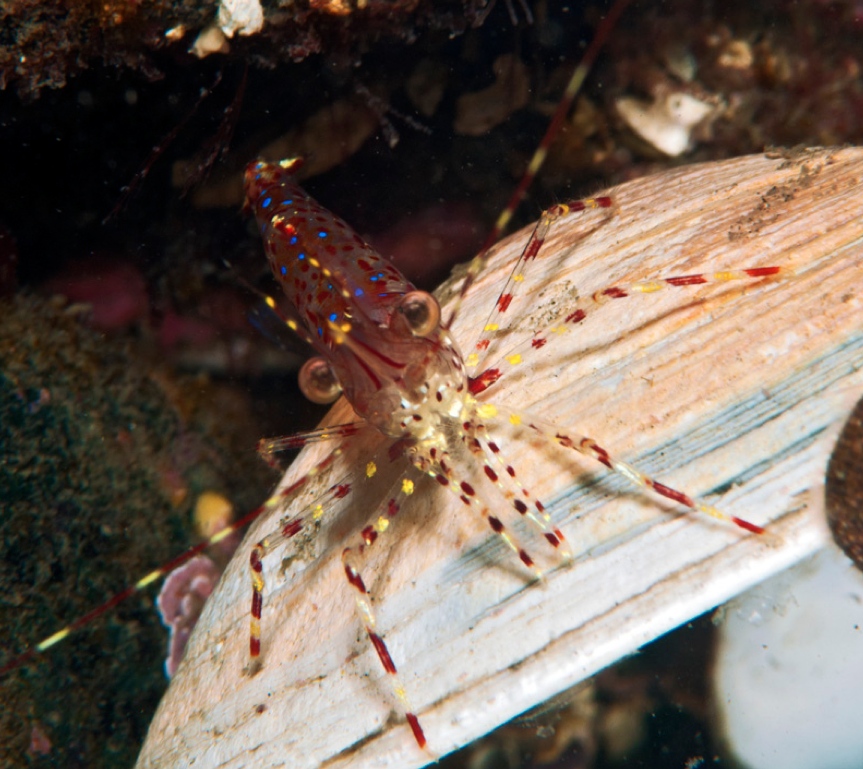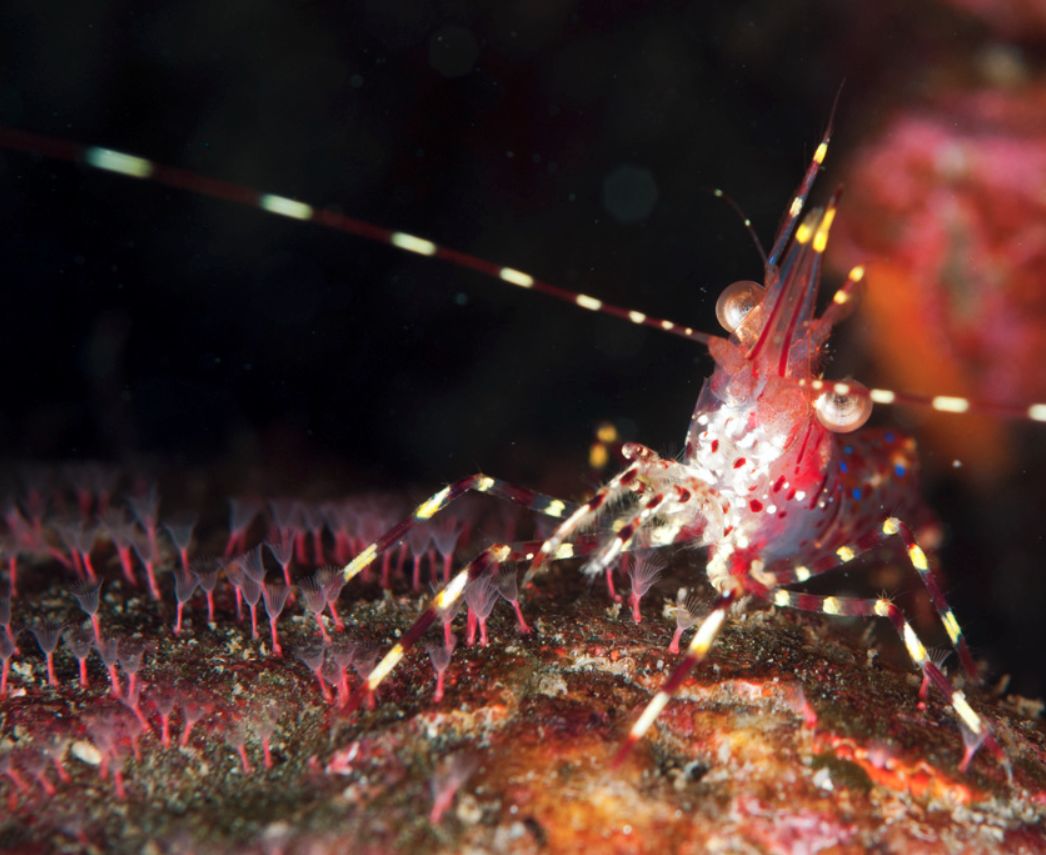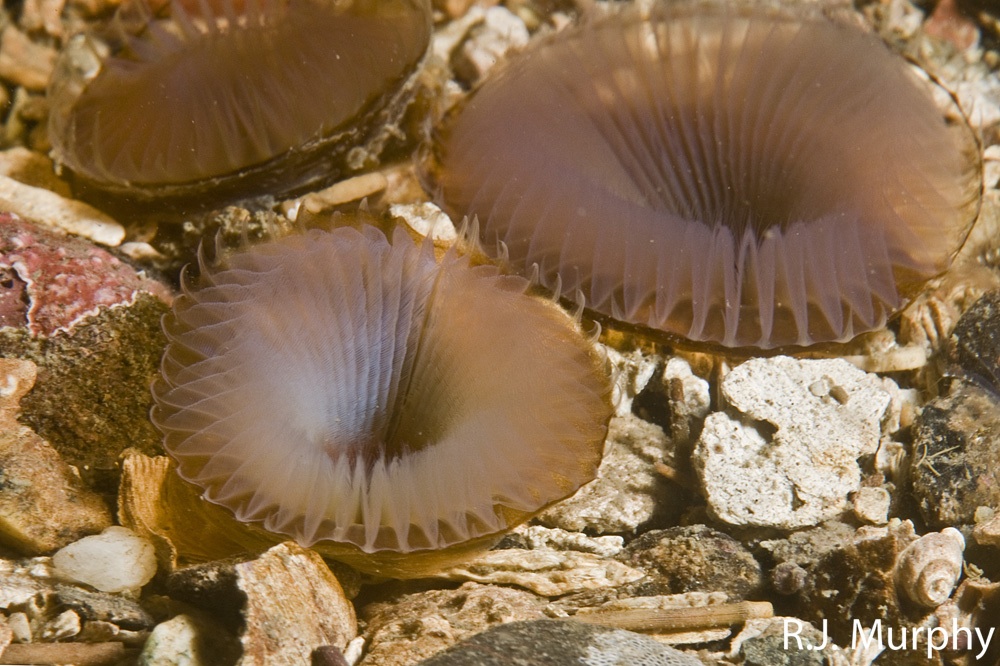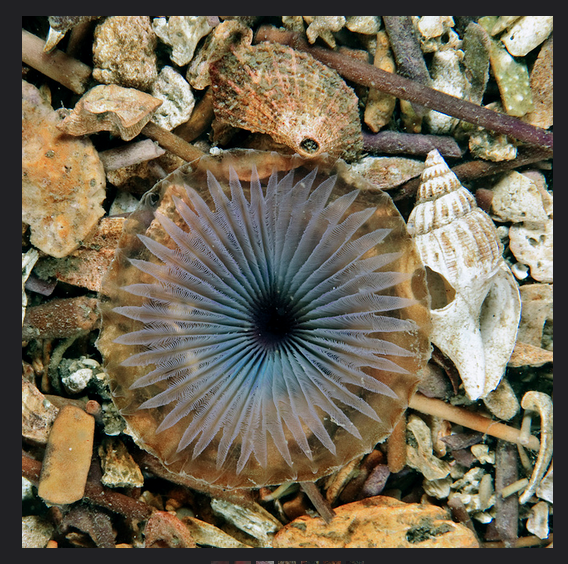Pam Birley took this photo using the remote cam 5 on February 6, 2010. We have had difficulty identifying it but it looks quite like a Laysan Albatross. Below is a quote from Pam:
“Thought I would draw your attention to this mystery bird, seen on Middle Rock on Saturday. I was actually looking at the seals but this large bird caught my eye because it was so white. I wish I had taken more pictures but only saved this one. It was larger than the Cormorants (Beside it in the photograph) and had a big yellow/orange beak. It was white except for the wing area which was black. It was not a double-crested Cormorant. The only thing I can come up with from Sibley and consulting the internet is a Laysan Albatross. Apparently they only breed in the Hawaiian Islands area but do travel up to the Bering Sea, Alaska and the Pacific NW.”
This article details the ecological issues threatening this bird such as bycatch in the commercial high seas drift net fisheries.
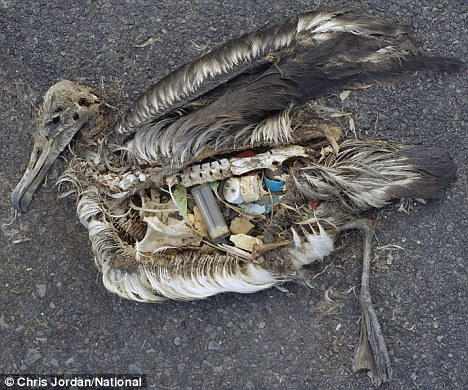 See this article ” How we killed paradise with plastic: Grotesque consequences of our casual throwaway culture” The image from it shown here provides a stark reminder of the tragedy of plastic pollution in the ocean.
See this article ” How we killed paradise with plastic: Grotesque consequences of our casual throwaway culture” The image from it shown here provides a stark reminder of the tragedy of plastic pollution in the ocean.
Domain Eukarya
Kingdom Animalia
Phylum Chordata
Subphylum Vertebrata
Class Aves
Order Procellariiformes
Family Diomedeidae
Genus Phoebastria
Species mutabilis
Common Name: Laysan albatross
| Other Members of the Class Aves at Race Rocks |
and Image File |
 The Race Rocks taxonomy is a collaborative venture originally started with the Biology and Environmental Systems students of Lester Pearson College UWC. It now also has contributions added by Faculty, Staff, Volunteers and Observers on the remote control webcams. Pam Birley, 2010 The Race Rocks taxonomy is a collaborative venture originally started with the Biology and Environmental Systems students of Lester Pearson College UWC. It now also has contributions added by Faculty, Staff, Volunteers and Observers on the remote control webcams. Pam Birley, 2010
|

